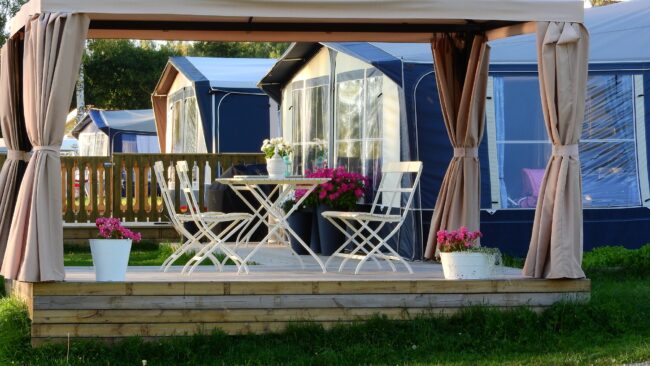Creating a warm and energy-efficient home is a goal that many of us share. Insulating your space is a crucial step in achieving this.
Insulation is like a cozy blanket for your home. It helps maintain a comfortable temperature year-round, while also saving you money on energy bills. But it’s not just about staying warm in the winter; it’s about creating a sustainable living environment.
Section 1: Understanding Insulation
Before we delve into the tips and tricks, let’s get a grip on the basics of insulation.
Types of Insulation
There are various types of insulation materials available, each with its unique properties. Here are some common ones:
- Fiberglass Insulation: This is perhaps the most common type. It consists of tiny glass fibers and is known for its effectiveness and affordability.
- Cellulose Insulation: Made from recycled paper products, cellulose insulation is eco-friendly and offers good insulation properties.
- Spray Foam Insulation: This type of insulation expands to fill gaps and provides an airtight seal, making it highly efficient.
- Foam Board Insulation: These rigid panels come in different materials, such as polystyrene and polyurethane, and are great for insulating walls and roofs.
Now that we have a basic understanding of insulation let’s move on to practical tips.
Section 2: Insulation Tips for an Eco-Friendly Home
Creating a cozy and eco-friendly home involves choosing the right insulation materials and methods from professionals like Fletcher Insulation. Here are some tips to get you started.
1. Assess Your Home’s Needs
Before you begin insulating, conduct an energy audit. Identify areas where your home loses the most heat. Common problem areas include the attic, walls, windows, and doors. By pinpointing these spots, you can prioritize your insulation efforts.
2. Choose Sustainable Materials
When selecting insulation materials, opt for eco-friendly options. Look for products with high recycled content or those made from renewable resources. This reduces your environmental impact while keeping your home comfortable.
3. Seal Gaps and Cracks
No matter how good your insulation is, it won’t be effective if there are gaps and cracks in your home’s envelope. Use caulk and weatherstripping to seal these openings. It’s a simple and cost-effective way to prevent heat loss.
4. Properly Insulate Your Attic
The attic is a major source of heat loss in many homes. Insulating your attic can significantly reduce this loss. Consider adding a thick layer of insulation to the attic floor to keep warm air from escaping into the cold outdoors.
5. Upgrade Your Windows
Old or poorly sealed windows can be a major source of heat loss. Consider upgrading to double-glazed or energy-efficient windows. If that’s not feasible, you can also use window insulation film or thermal curtains to trap heat indoors.
6. Insulate Your Walls
Walls are another crucial area to insulate. Depending on your home’s construction, you can choose between cavity wall insulation or external wall insulation. Both methods help maintain a consistent indoor temperature.
7. Don’t Forget the Floors
Insulating your floors can also make a big difference in your home’s comfort and energy efficiency. Install underfloor insulation, especially if you have a basement or a crawl space.
8. Consider Renewable Energy
Incorporate renewable energy sources into your home, such as solar panels or a heat pump. These technologies can reduce your reliance on fossil fuels and further decrease your environmental impact.
Section 3: DIY vs. Professional Insulation
When it comes to insulating your home, you have two options: DIY or hiring a professional. Let’s explore the pros and cons of each.
DIY Insulation
Pros:
- Cost-effective: You can save money on labor costs.
- Suitable for small projects: DIY insulation is perfect for small-scale projects like sealing gaps and cracks.
- Learn new skills: You can acquire valuable DIY skills.
Cons:
- Time-consuming: Larger projects can be time-intensive.
- Risk of mistakes: Incorrect installation can lead to reduced effectiveness.
- Limited expertise: You may not have access to specialized equipment.
Professional Insulation
Pros:
- Expertise: Professionals have the knowledge and experience to do the job right.
- Time-efficient: They can complete large projects quickly.
- Quality assurance: Professionals ensure that insulation is installed correctly.
Cons:
- Cost: Hiring professionals can be expensive.
- Limited control: You may have less control over the process.
Section 4: Financing Your Insulation Project
Investing in insulation is an investment in your home’s comfort and energy efficiency. While it can have a significant upfront cost, there are ways to finance your project.
Government Incentives
Many governments offer incentives and rebates for energy-efficient home improvements. Check with your local authorities to see if you qualify for any financial assistance.
Energy-Efficient Mortgages
Some lenders offer energy-efficient mortgages that allow you to finance insulation improvements as part of your home purchase or refinance.
Home Equity Loans or Lines of Credit
If you have built up equity in your home, you can consider taking out a loan or line of credit to fund your insulation project.
Section 5: Maintaining Your Insulation
Once your home is properly insulated, it’s essential to maintain it to ensure long-term effectiveness.
Regular Inspections
Schedule annual inspections to check for any signs of damage or wear and tear. Address any issues promptly to prevent heat loss.
Replace or Upgrade as Needed
Over time, insulation materials may degrade or become less effective. If your insulation is no longer performing optimally, consider replacing or upgrading it.
Monitor Energy Usage
Keep track of your energy bills to see if they decrease after insulating your home. This will give you a clear indication of your project’s success.
Conclusion
Whether you choose to tackle the project yourself or hire professionals, the benefits of proper insulation are well worth the investment. So, take the first step toward a cozier and greener home today!



